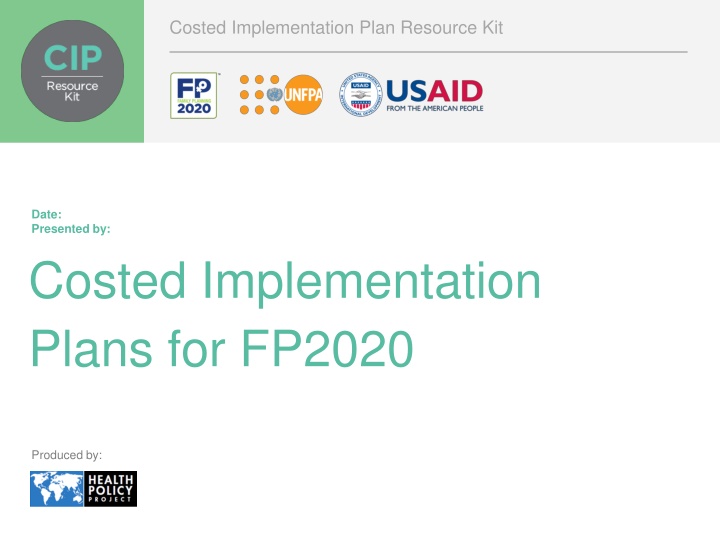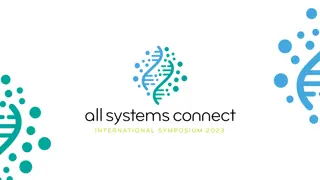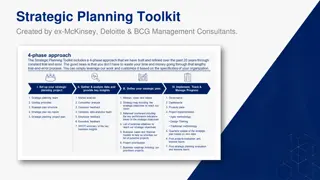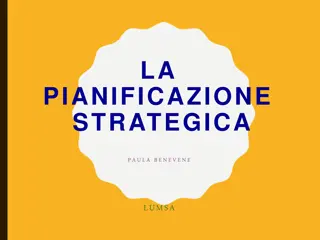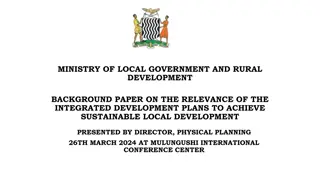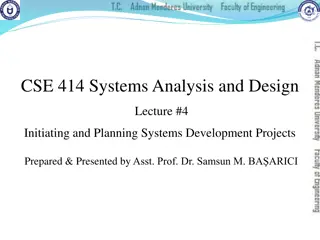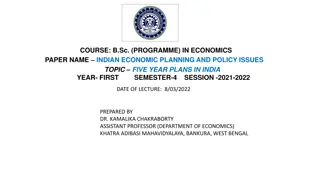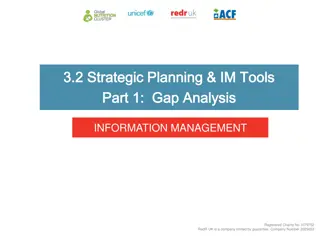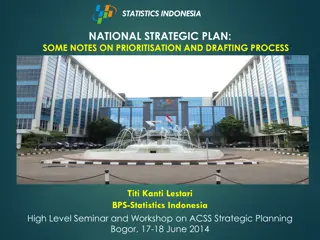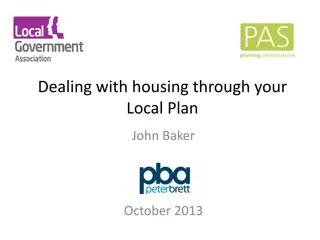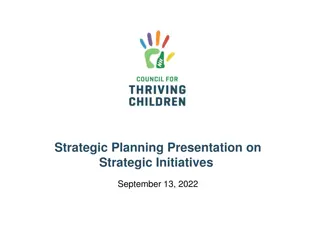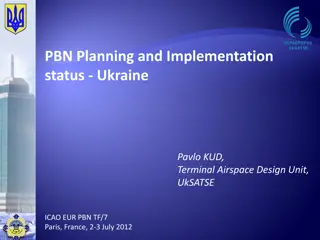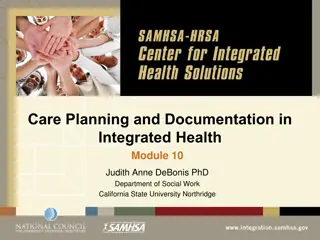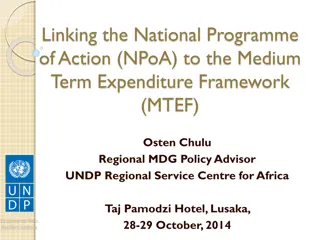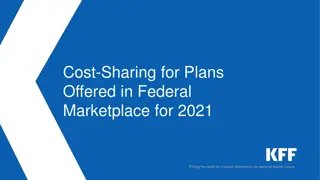Strategic Planning with Costed Implementation Plans
A Costed Implementation Plan (CIP) is a crucial tool for strategic multi-year planning in achieving family planning goals. It helps in determining budgetary needs, strategic resource allocation, and aligning stakeholders for impactful results. The CIP clarifies country strategies, outlines activities, estimates impacts, and secures commitments. It addresses various thematic areas of family planning programming and has been implemented in several countries with positive experiences and results.
Download Presentation

Please find below an Image/Link to download the presentation.
The content on the website is provided AS IS for your information and personal use only. It may not be sold, licensed, or shared on other websites without obtaining consent from the author.If you encounter any issues during the download, it is possible that the publisher has removed the file from their server.
You are allowed to download the files provided on this website for personal or commercial use, subject to the condition that they are used lawfully. All files are the property of their respective owners.
The content on the website is provided AS IS for your information and personal use only. It may not be sold, licensed, or shared on other websites without obtaining consent from the author.
E N D
Presentation Transcript
Costed Implementation Plan Resource Kit Date: Presented by: Costed Implementation Plans for FP2020 Produced by:
Why Do a Costed Implementation Plan? A CIP is a strategic multi- year planning document that details activities and costs for achieving our goals. The CIP has helped us to determine budgetary needs to reposition our family planning efforts. Monitoring the CIP is helping us to be more strategic in how resources are invested in the country to get results [Include here any pertinent goals and/or challenges a CIP will help address, e.g., contribution of FP to country s development goals, country s FP goals, FP2020 commitments, estimated number of women with unmet need, etc.] Maurice Hiza, National Family Planning Coordinator, Government of Tanzania www.familyplanning2020.org/cip 2
A CIP promotes Strategic decision making to allocate limited resources Realistic assessment and costing of program requirements Coordination and alignment of donors and stakeholders behind the government s priorities www.familyplanning2020.org/cip 3
Purpose of the CIP Clarify a unified country strategy Describe activities and outline an implementation roadmap in coordination with all partners Estimate demographic, health, and economic impacts of FP investments Develop a budget Secure new commitments from partners based on defined needs and gaps Monitor progress www.familyplanning2020.org/cip 4
CIPs Can Address All the Major Thematic Areas of FP Programming Demand creation Service delivery and access Contraceptive security Policy and enabling environment Financing Stewardship, management, and accountability www.familyplanning2020.org/cip 5
Countries with CIPs for FP CIPs in response to FP2020 or Ouagadougou Partnership Bangladesh Benin Burkina Faso Cameroon C te d Ivoire Democratic Republic of the Congo Guinea Kenya Mali Mauritania Niger Nigeria (Federal & Gombe State) Senegal Tanzania Togo Uganda Zambia [Update with latest country information] www.familyplanning2020.org/cip 6
CIP Experiences and Results Provide guidance for reaching FP goals The CIP is a tool that will empower us in Kenya to confidently advocate for investments in FP for the Kenya Vision 2030 with accurate figures of cost and priorities. In fact, the CIP can be referred to as the Bible of family planning program implementation in Kenya Promote greater action, accountability, advocacy Support expanded services Dr. Bashir M. Isaac, Former Director, Division of Reproductive Health, Kenya Source: FHI 360, May 2013, Costed Implementation Plans: Guidance and Lessons Learned. www.familyplanning2020.org/cip 7
CIP Timeframe and Costs Timeframe and costs will vary depending on the country and the scope of the CIP A CIP may take 6 months to 1 year to develop through an inclusive, participatory process CIPs usually cover 3 to 6 years; thus, implementation will last several years Costs of developing a CIP are typically covered by a mix of domestic government and international donor resources www.familyplanning2020.org/cip 8
CIP Products National Action Plan for Family Planning Optional products: National FP situational analysis Regional activity plans and budgets Stakeholder engagement plan Marketing and communications materials Implementation framework with activity detail and timeline Detailed activity-based budgets Financial gap analysis Estimates of impacts Monitoring and evaluation tools Resource mobilization framework www.familyplanning2020.org/cip 9
CIP 10-Step Process 10-step process established by the governments, donors, and partners experienced in CIP development and execution to date Steps cover planning, development, and execution Not every country will move through 10 steps or use all tools/templates in the CIP Resource Kit Resources available as needed to support different goals, timeframes, and budgets PG. 10 www.familyplanning2020.org/cip 10
CIP 10-Step Process: Phase 1 www.familyplanning2020.org/cip 11
CIP 10-Step Process: Phase 2 www.familyplanning2020.org/cip 12
CIP 10-Step Process: Phase 3 www.familyplanning2020.org/cip 13
Typical Resource Commitments for CIP Development Ministry of Health commitments Partner/donor commitments Program information and feedback throughout the process 1 staff to act as MOH Focal Point Seconded staff for CIP process, part- or full-time 1 staff to act as CIP Project Manager Support for other CIP costs at request of the government (e.g., national and/or regional consultative workshops, national consultants, etc.) Office space and basic administrative support for any in-country technical assistance www.familyplanning2020.org/cip 14
Next Steps [Add actions or decision points to move the process forward, e.g., Costed implementation plans are crucial for determining the financing gap and mobilizing resources. They are important for governments to determine the internal resources that have to be mobilized to fill the gap. Assess the MOH s interest, needs, and resources Discuss resource gaps with donors] Ishrat Husain, Senior Health Adviser, Africa Bureau, USAID www.familyplanning2020.org/cip 15
Thank you. The information provided in this document is not official U.S. Government information and does not necessarily represent the views or positions of the U.S. Agency for International Development. Contact Us Health Policy Project 1331 Pennsylvania Ave NW Suite 600 Phone: (202) 775-9680 E-mail: policyinfo@futuresgroup.com www.healthpolicyproject.com The Health Policy Project is a five-year cooperative agreement funded by the U.S. Agency for International Development under Agreement No. AID-OAA-A- 10-00067, beginning September 30, 2010. It is implemented by Futures Group, in collaboration with Plan International USA, Avenir Health (formerly Futures Institute), Partners in Population and Development, Africa Regional Office (PPD ARO), Population Reference Bureau (PRB), RTI International, and the White Ribbon Alliance for Safe Motherhood (WRA).
